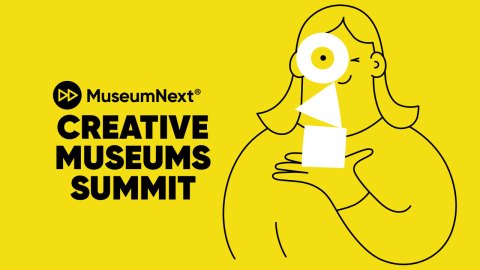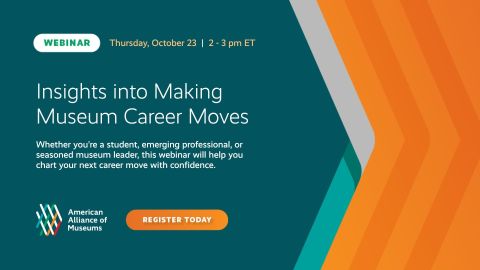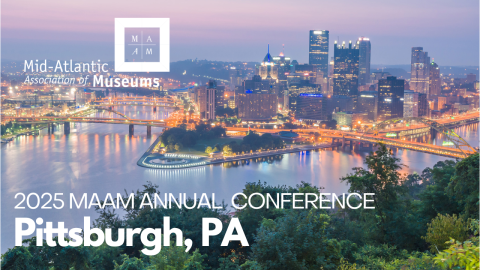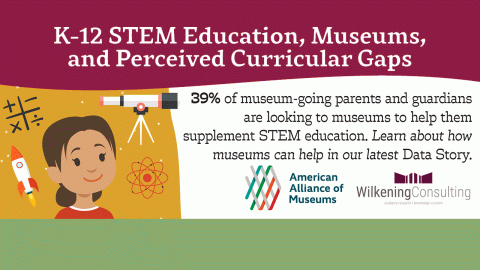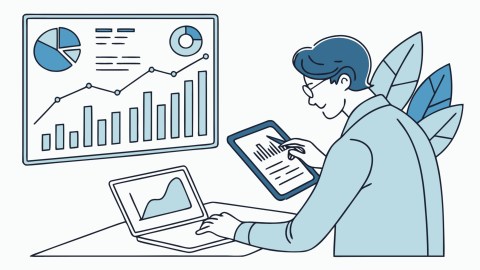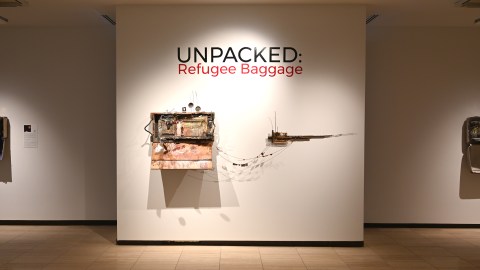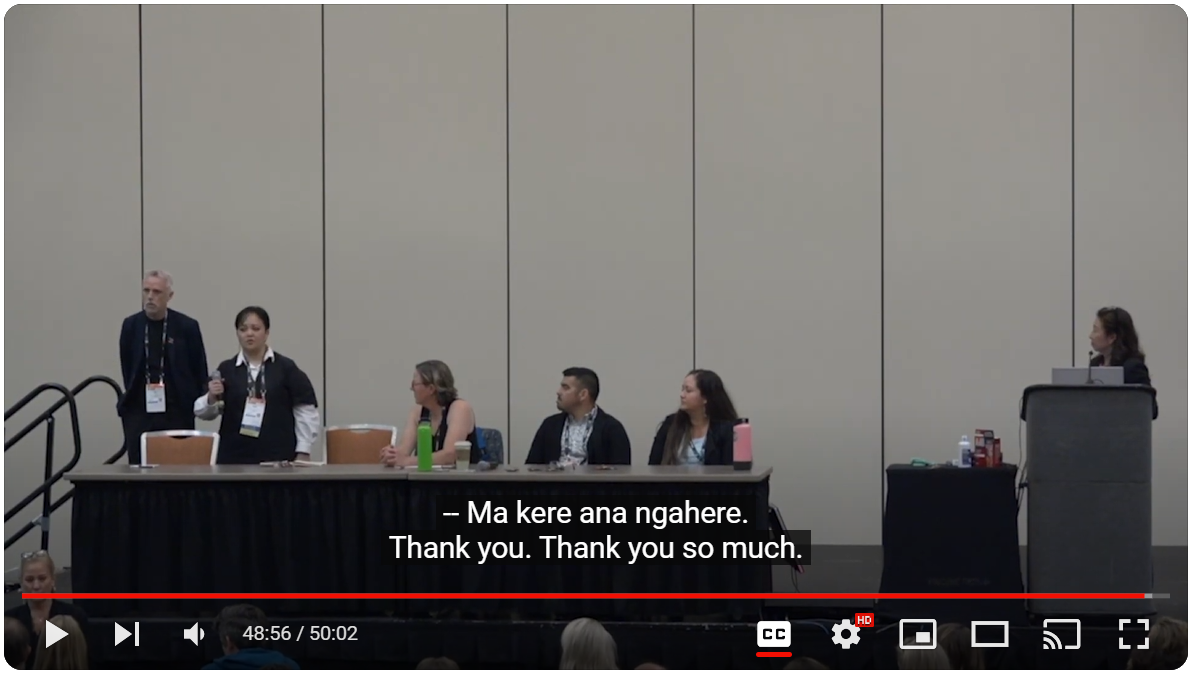
This is a recorded session from the 2024 AAM Annual Meeting & MuseumExpo. Natural History museums play a unique and urgent role in helping document and understand the world’s plants and animals during the current biodiversity and climate crises. This work is taking place at a time when museums are reckoning with their past; challenging – and being challenged on – their authority to do this work; and aspiring to consider and apply indigenous knowledge in their collecting, research, and interpretive practices. This recorded session explores this topic through two case studies from different sides of the Pacific Ocean and in different cultural contexts.
Transcript
Hae Su Oh:
So good morning, welcome to our session Confronting Colonialism: Intersections of Scientific and Cultural Knowledge. My name is Su, I’ll be moderating this session.
I was formerly at the Natural History Museum of Los Angeles County where I was one of the executives who supported this institutional process. And I would like to welcome you and our esteemed colleague panelists to this discussion.
They’ve traveled here from afar, and we’re doing a little geography lesson here today, both across the nation from Los Angeles and of Wellington, New Zealand. So, I appreciate being present here because I know it’s a journey to share this kind of work. And for all of you here in the audience is whoever traveled afar.
So, both the Natural History Museum of Los Angeles County and the National Museum of New Zealand in Te Papa Tongarewa will be taking you on a journey as they share the stories in confronting their colonial past and practice while working with their local indigenous peoples, all in the consideration of the biological remains of whom are considered cultural and sacred ancestors. And as we share the context and repatriation process, we wanna follow up with an open dialogue with the panelists and the audience. One note, many times in museums we refer to best practice and what happens when there but what happens when there is no consistent practices established in our field that we can refer to. We must use our humanity to approach these scenarios. We asked to take a moment for you to shift your perspective while we listen to others and in these Conversations, especially in working with each community and as their community Representation matters.
Let’s go down the table and let everyone introduce themselves.
Gabrielle Crowe:
Miha to hope to Hovitt-Tomet, the 20-A Gabrielle Crow. Greetings, everyone.
Hello, good morning. My name is Gabrielle Crow. I am the vice chair, as well as the secretary for environmental sciences for the Gabriela Shoshone Nation. So, in addition to a land acknowledgement, I just wanted to give a small blessing this morning before we start so we can start our journey in a good way together. So I just asked that the creator be here with us in spirit and mind and body and for us to have you know open thoughts about the process that we went through and take this as our experience as kind of an example for things that you can do to build community and partnerships in your own institutions. And that you know if you have questions that there are people that are there to help seek or guide you with these answers. And so, just to seek knowledge from those communities that are surrounding you, and that I hope that you all have a good session. So, wish kinda huh, thank you.
Miguel Ordeñana:
Thank you. My name is Miguel Ordeñana, I’m a co-senior manager of the Community Science Office in the Natural History Museum of Los Angeles County. I’m also the biologist that discovered P22, the mountain lion on the screen there and also responsible for applying for the permit to bring his remains to the museum.
Amy Gusick:
Morning everyone my name is Amy Gusick I’m the curator for anthropology and the NAGPRA officer for the Natural History Museum in Los Angeles County and I’m also responsible along with a number of my other colleagues for a lot of tribal liaisons, tribal engagement with the local indigenous communities within Los Angeles and surrounding areas with our institution.
Migoto Eria:
[Indistinguishable Māori] Hello everybody my name is Migoto, I am from the east coast of the north island of New Zealand. And I’m just acknowledging the presence of my ancestors at this talk and supporting you on your journey. And I’m hoping that this discussion we can leave with inspiration and support for one another [Indistinguishable Māori].
Philip Edgar:
[Indistinguishable Māori] By way of introduction, I’m Philip Edgar, I will say that my family are from Scotland and Ireland, I grew up in Christ Church on the South Island of New Zealand. I currently live in Wellington. I’m the head of Natural History at Tapa National Museum. Kia ora.
Su Oh:
Thank you everybody. Right before we start with a, as a point of reference, and with a quick show of hands, I would like to ask you how many of your museums are engaging in dialogue with your indigenous communities, whether it be with artifacts, collections, programs, or exhibitions.
Wonderful. Thank you. So, as I said earlier, we’re going to take a look at these two case studies in which each institution worked together with their local Indigenous communities and government agencies to take a holistic approach to repatriation of a significant and sacred ancestor.
Acknowledging that these scenarios are extremely complex, this has brought forth an opportunity to engage in challenging dialogue while still sharing together with deep empathy.
So, I’d like to ask Miguel, Amy, and Gabrielle, can you please share with us the story of the Mountain Lion P-22?
Gabrielle Crowe:
So, to put into context, what’s on the map right there is actually my ancestral territory. So, being from a Gabrielino tribe, another name that they go by is also the Tongva.
So, our tribe is actually located in Los Angeles, California. Now for a lot of people, Los Angeles has become a home for many other indigenous people, because of relocation, assimilation, other different things that happen in different times that we have the largest urban native population in the entire United States is in Los Angeles, but there’s also not just Native American communities, there’s also indigenous communities from Mexico and other places in the world that are there.
So, something to note in this is that when more and more indigenous communities come to the area, it’s also difficult to sometimes see the actual indigenous communities that that’s their ancestral lands. And so, with us and the situation that happened with P-22 or in our language Tukorot, it was something that the situation mirrored our own experiences as indigenous people in this area of Los Angeles. So, when I say Los Angeles, that’s just a broad term our tribal territory is actually on the coastline from Malibu all the way down to Laguna Beach and inland all The way into the San Gabriel Mountains And it’s also the four southern Channel Islands so including Catalina Island. So I don’t know if any of you have ever been there It’s one of our biggest tourist destinations off the coast of LA. And so for a long period of time our people were kind of hidden in the shadows for for those of you that don’t know the context of it, we’re a part of the, our products of the California mission system where basically our people were colonized, they were scooped up from around the area that they were living in and basically forced to live and work on the mission.
For those who actually survived even through that process, each time a new culture or settler came into the area, they basically were forced to, I guess adopt that new way of life and to the point where for over 200 years our tribal people were not able to actually do anything in ceremony or anything in their own culture and tradition so now we’re at the point where we have a lot of cultural revitalization going on and so for us and seeing that our territory slowly and surely shrunk over time by urbanization, colonization all these different things that are happening, we saw the same thing that happened to our people as the same thing that happened to this mountain lion. And what makes it so special is that he was born in the Santa Monica mountains, but he actually crossed different freeways to go into the different territories that he was at.
And the beautiful way that the city of Los Angeles actually embraced this mountain lion was something that had never really been seen before. And so, for us, It was a different connection in the fact that we didn’t see it as something that’s different to humans. So, for our creation stories, basically everything that’s in the planet, so the plants, the animals, the dirt, the air, everything, those all sustained us and people were the last thing to come onto Earth.
And so, for us, we consider even the mountain lions or other animals to be our ancestors. And so, if we have a duty to protect those animals that don’t necessarily have voices like humans do, but they are equally as not, if not more important to us than other humans. So, thank you. Oh, and let me just give context to, so that picture is actually done by a Gabrielino artist, her name is Washoyo. So, she did it after P-22 passed away, but it’s just a very powerful picture that was actually put up in the museum afterwards as well.
Miguel Ordeñana:
Thank you, Gabrielle, for that important context. So, I’m gonna talk about P22’s impact to the scientific community and also the urban wildlife conservation.
So, Griffith Park, which is where P22 ended up living basically his entire life, which is over a decade. This Griffith Park is surrounded by freeways and urbanization on all sides. And that’s important to note, because a lot of people, for that reason, thought Griffith Park was just useless for wildlife. And there weren’t any possible linkages between Griffith Park and where we knew mountain lions lived.
And so myself and Friends of the Group of the Park, started a study, a grassroots project, to basically prove that it’s not just where the Hollywood sign is, and it’s not just for filming and tourism. This is a very important place. And it was my local Yosemite as a little kid. I grew up in Los Angeles, and I had struggled myself to connect to nature. So, this is a very personal effort as well for me.
So next slide, please. So, the discovery of this mountain lion butt was basically life changing. And it was like seeing chupacabra or bigfoot for the first time. It was that type of moment for me and I will never forget it. And it said a lot to connectivity issues and the resilience of these animals and that impact keeps going.
Next slide, please. That’s the first shot that was actually taken of P-22 by these remotely triggered cameras, motion activated cameras that we positioned on the edges of the park.
Next slide. And then after the I shared this information with the National Park Service, they incorporated him into their study that had started in 2002 and gave him the name P-22. P stands for Puma, which is just another name for the same species, and the 22 is the sequence in order that the animal is incorporated into the study. And through that process, they put a GPS tracking device to see how he used the urban landscape and also took some blood to see if he was genetically tied to the Santa Monica Mountains population that they were already studying. Next slide.
And so, the Santa Monica Mountains population was where he was genetically tied to. His dad was P1, the first mountain lion studied in the study. And it’s a situation where these animals are on the verge of extinction, one of the most endangered mountain lion populations in the world because they are affected by fragmentation mainly by the 101 freeway that is congesting these solitary, territorial animals to the point where they are killing each other over remaining space, they can’t escape from each other without getting hit by the freeway- cars on the freeway, and if they’re not doing that, they’re inbreeding with each other. So, a lot of problems there. So next slide. So, P-22 was born west of the 405 freeway, where P-1 lived his whole life. And to escape his father, he had to leave east across the 405, which had killed two other mountain lines before him.
Then he went through Beverly Hills, Bel Air, Hollywood, then crossed another 10- lane freeway, the 101, to eventually get into Griffith Park. Next slide. And as soon as that story got out, he became locally famous, and then globally famous, when that famous National Geographic Hollywood sign photo started circulating. And even for issues like rat poison exposure.
And so, the state of California banned the most lethal form of rat poison because he was the ambassador for that because he got sick with rat poison and mange. Next slide. But he’s most famously a catalyst for a really important campaign to build the what is going to be the biggest wildlife crossing in the world that will go over the 101 and connect these populations to each other.
And it was a 10-year campaign that I was fortunate enough to be part of and is going to save this population from extinction and its own P22 for other urban areas.
And history has been translated in so many different ways and languages because it’s so relevant from the standpoint of it’s a story of resilience going against the odds. And so, it’s been translated in children’s books, multiple languages in the media, hip hop music, all types of different things, so you can change the slide. And even in his passing, he missed the slide, but, oh yeah, there it is. Even in his passing, he left an impact where people wanted to honor him through memorials and murals all over the city, just like they did for Kobe Bryant when he passed away. And even a celebration of life was a sold-out event at the Greek Theater, and Tatavium Elder, Alan Salazar, let the blessing, and even Gabrielle’s beautiful daughter was in the audience there with her own plushie doll, P-22. And it was a really moving time, and next slide. Oh, sorry, before, so a little bit back, there we go. This is kind of where I transitioned over to Amy where I because of this biological and cultural relevance that I was aware of to a certain extent.
I really wanted to make sure that his legacy was honored and my idea was to apply for a permit a year before he passed away with the set California Department Fish and Wildlife to bring his remains to the museum So that he was not incinerated because the normal practice of our local state wildlife agency is to do a necropsy which is an autopsy for animals and then incinerate the body so that there’s no that opportunity to do anything after that is lost. And so that’s why I wanted to preserve that opportunity but unfortunately I made the mistake of not consulting with local tribes while I did that or even after I got the permit and I still regret that to this day.
But at the same time, it was a huge learning lesson for me and a growth opportunity for myself and our institution, I hope. And I’m really happy that now we have the relationships that we have. And Amy’s going to take it from here with the rest of the story.
Amy Gusick:
Great. Thank you so much. Yeah, thanks. You can go to the next slide. So, I think you heard from my colleagues about the cultural context of P22, the biological and scientific context of P22. So now we’re at the point of what happens when this important animal, not only for conservation and biology, but also an animal that is really very important to the local indigenous communities, not only because of the fact that he’s an ancestor, but also because he really is amongst ancestors really kind of mirrors the community, as you heard my colleague Gabrielle speak about.
So, what do we do? And so this was the question that came before us and we were able at this point, this was two days before Christmas, when this all occurred, in 2022 passed and was being transferred down to the San Diego zoo for the necropsy, what do we do at this point? He’s coming to our institution per the permits, but we also have a very good understanding through our existing partnership with our local indigenous communities that this is a very important moment for them. This is an important ancestor for them.
So, we were able to utilize our existing relationships and very, very, very quickly, within a couple days’ time, really kind of network out very quickly by contacting, emailing, was on the phone for a couple days with elders from the different groups. There are a number of different Native American communities, local indigenous communities within Los Angeles. I think there’s over 20, 25. And it was important to us to make sure that we were reaching out to every single one of them because we didn’t want anyone to feel left out. So, then the way we were able to do that was to utilize our existing relationships. And I can’t stress enough how important that was at this point.
We were able then to identify individuals that wanted to travel with Miguel down to San Diego to escort P-22 back to the Natural History Museum. So, Gabrielle was on the trip as well as Alan Salazar were on the trip as well. And that was important because they were able to handle P-22 in a culturally appropriate manner. and they were able to provide blessings for him as he made the trip up to the Natural History Museum.
On the other end of his journey, we understood the importance of this being an important community event for the Native American community. So, we were able to arrange to have a number of individuals whoever wanted to come to the institution to welcome him to our institution.
And so that was the part of that. There’s Some of the community members there, this is after P22 arrived at our institution, arrived at NHM and was welcomed by the community and then held at our institution while we discussed what the next steps were.
And this was a really important part because thinking about repatriation, I think, when people think about repatriation, when they think about working with museums, working with native communities, I think the first thing that probably comes to mind is NAGPRA, cultural collections or patriation of ancestral remains, of human ancestral remains. But what happens when it’s an animal?
What happens when it is, the normal process would either be incineration, as Miguel mentioned, or possibly accessioning into the collection for study? Is that appropriate in this case?
What should we do? Was really the point that we were at.
So, we were able to then work with the 20 different Native communities within Los Angeles, invite them into NHM, along with our staff, our biologists, myself, others within our institution that work with and had relations with the Native communities, as well as the National Park Service and the representatives from California Fish and Wildlife.
So, we were at really a kind of pivotal moment, I’d say, where you have a number of different individuals coming to the table to listen and to understand how to move forward.
We had requests from the tribal communities to not accession him into our collections and to do no further scientific study on him. He had already had a necropsy.
There had been a few samples taken from him on the necropsy, our process would have been to take additional samples and then accession him into the collection for future study. The native community was uncomfortable with that, and they asked us to please repatriate him with no further study. We agreed to do that, and I do have to certainly give kudos to our federal and state partners because they were able to, even with the permitting, there’s kind of special conditions with the permitting, they were able to also honor those requests.
We don’t, so P22 was repatriated to the Native communities, and I will say this was also the importance of him to the communities was also very stressed to us because we did have all of the many of the communities come together and not all of the communities typically have meetings together or work together very well in some cases.
So, the fact that any disputes or differences were put aside to come together as one community to say, look, this is important to us and this is what we need, really, really resonated with us, and we listen to our partners.
We listen to, you know, the relationships that we had, and we understood the magnitude of this for them. So, we were able to repatriate the mountain line, and there was a ceremony, and he was respectfully reburied from an area from where he…
That’s right. The only– one thing I did forget, the only thing that we were– that the tribes did support that we collected were digital scans and some molds from P22.
But other than that, he was repatriated, and he was buried. And I’m going to actually pass it back over to Gabrielle to talk about kind of moving forward.
Gabrielle Crowe:
Yeah, so I think it’s also important to note that when this whole process happened and it happened very quickly and we were all, it was kind of historic for us as different tribal communities to come together ’cause for many, many years, it would be a very difficult thing to have everybody in the same room together, but also in agreement was kind of almost unheard of.
And so, part of what also made it interesting too is that the museum themselves gave us the time and space to also have our own meetings with just the tribal community and they were you know they left themselves out of the conversation so that we could have our own discussion figure things out before we went back to museum to give them kind of our answers. And so, myself and one other tribal community member were both actually scientists too so we kind of balanced out kind of the two worlds between it.
My career is in environmental education and so taking that into account realizing that from a conservation standpoint that there’s so much to learn from this one mountain lion that we wanted to, you know, because there was a lot of arguments about whether or not the samples that had already been taken were also going to be given back and then going to be buried with him. And so this is a long process and when it happened, you know, in order to get everybody to try and get together on the same date is almost crazy in the first place. But trying to get together in agreement with it and doing this, so we ended up getting to the point where we were in agreement that the samples that had already been taken were done, we were done so ahead of time and that, you know, we were allowing the museum to do the scans just from a conservation standpoint for us to still be able to study just how amazing this one mountain lion was.
But from that, you know, when the process happened, like we, as the tribal community, like we were able to bury him, we still even have questions like where is he buried? It’s like, well, we’re not going to tell you.
It’s just in a general area because people, you know, were arguing back and forth about wanting to bury him at Griffith Park and other things too. But it was just such a special thing that we wanted him to be at rest as soon as he was put to rest.
So, in moving forward, just something that’s kind of interesting to note is that the museum themselves have had a relationship with my own family for 30 plus years.
You’ll see at the end of the– this is actually still from a video that we actually just had digitized over the last couple of weeks that was from 30 plus years ago of my grandparents and some of my other family members actually building one of our traditional houses at Alvera Street of all places.
But so, are we already had a long-established relationship with the Natural History Museum? But at the same time, that made the relationship and everything that happened go more quickly with this process with P22.
But I think that’s something that’s important to know is that whether or not you already have an established relationship, or whether or not you’re started with a relationship today, if you start something today and something happens in your museum in 30 years, you already have this time period. So, it’s just, it’s something to think about that you can establish those connections as relationships and start them now, and really work towards building a relationship where you’re mutually respecting each other, realizing like you both have something to learn on both ends of the situation and you’re working together with them before a project happens or before you need them to consult on something.
You know, we got connected with the museum, reconnected with the museum a few years ago and actually they used to have a Native American exhibit hall and so all these videos and other things were in the Natural History Museum.
But as museums do, they remodel, they change, and other things sue so the collections go somewhere else. And so that’s how I actually established a connection with Amy just a few years ago and going to visiting and seeing these things.
So, it’s actually been a process even to get those digitized. But it’s been an amazing process in building this relationship and really feeling like we’re moving at the speed of trust, but also, I can text her about something or she can text– and it’s having that kind of close relationship.
That’s something to strive for because going to hash out ideas, but I think that there’s always a starting point and I think that whatever your programming has going on at the museum, they invite us to community science, and we have partnerships with them. Our tribe recently received 12 acres of land back in Los Angeles and so Miguel and I do a lot of work together with the Indigenous School in Los Angeles and we actually do a lot of projects where we do research.
And so, it’s creating those career pathways, educational pathways for the community now so that you’re really strengthening that relationship. So, I think that there’s a lot to learn from this situation.
Su Oh:
Thank you, Gabrielle, Miguel, Amy. Thank you so much. [ Applause ] So, Phil and Mikoto, can you please share with us the story of the great-leatherback turtle, tehoun’
Migoto Eria:
I would like to take the time to respond to the land acknowledgement as representatives from Ōtautahi and also visitors here to those of you who are descendants of this land but also to acknowledge those of you who are descendants of the ancestor that was just discussed. It is a priveledge to be sitting here with you here in Baltimore and amongst you and the knowledge that you hold and the knowledge that you hold within your institutions. Thank you very much for taking the time to come and be part of this discussion.
What I’d also like to establish is that we represent many peoples from Ōtautahi and not only my own tribal heritage that I come from which is again the east coast of the north island which is the center of the universe but also tribes and the ancestors land at our museum resides on which is actually reclaimed land which is part of our harbor and its not without their support and their acknowledgement that we’re able to come here today and discuss this case study with you. And those tribes are [indistinguishable Māori] and it’s a privilege for me to and Phil to represent their voices here today. But last, not least the descendants of the leatherback turtle or we call the honu that are represented through this ancestor of and they are called the hoto haka people from the south island. So, there are lots of people represented through two people here, sitting here with you today to discuss this case study. But I wanted to in response to the land acknowledgement share with you some well wishes and blessings in our language which encompasses the reason why we’re all here today. And this is how it sounds
[Indistinguishable Māori]
Philip Edgar:
I’m actually gonna stand. I’m still on New Zealand time, and its 4 o’clock in the morning tomorrow so I’m kind of…I’m living in the past, which people often say. Anyway, so I’ll stand if that’s okay. …
So, Migoto and I are going to talk, give a bit of a story about the journey of a leatherback sea turtle from this beautiful place, [indistinguishable] on the south island and it’s journey to our museum, Te Papa in Wellington, and it’s return back to the land from which it came and to communities from which it came a short time after. It’s at this location that we received a call in March 2019, from our department of conservation.
That’s the New Zealand Government agency responsible for our environment and while it’s not a frequent thing to happen to get a call from them it’s not that unusual because the department is involved at every whale stranding for example they take responsibility for our marine mammals and when whales strand and whales are deceased on a beach they step in and work with our local iwi are local tribes to work out the next step in the process for that animal. And that could be reburial, it could be that the iwi, the tribe, use that animal for their own customary practices or the animal could be offered to a museum such as Te Papa to become part of the collection.
And this was the beautiful animal that had washed ashore. It’s a leatherback sea turtle weighing over 200 k. So, quite an amazing animal. And not something that you see every day. These animals are not uncommon in New Zealand waters but they are uncommon close to the shore and very uncommon for them to be washed ashore deceased in this way.
It’s an interesting animal that has, in scientific terms, no close relatives. It’s vulnerable, globally. And this population in the pacific is critically endangered. It’s in that state because of intensive egg collection over the last 100 years, fisheries bi-catch, and other threats to the environment today are putting these animals at grave risk.
So, the department of conservation asked Te Papa is this something the museum would be interested in brining into it’s collection and looking after for the long term? We have an active collection development program at Te Papa, we are a national museum that includes art collections, history collections, pacific cultures, Māori collections, and natural history collections. And the natural history area, where I’m the head we have an active program that’s really responsible for anything divided into the history of New Zealand, the south pacific, and our waters down south to Antarctica.
So, for a rare turtle like this it was an opportunity for that animal to become part of our collection. And to become part of our understanding about biodiversity.
So, with the understanding that we had the support of the local iwi, the local tribe, through the Department of Conservation’s discussions, our scientists retrieved the turtle from Kokorarata in South Island and drove it back to Te Papa.
And our scientists were really interested in trying to discover how the Honu, how the turtle died. So, in some of the cases to the line, a necropsy would have been performed on the turtle to understand those causes of death and also to prepare a skeleton to be part of the collection for comparative research in the future.
And this is a standard practice, so when we are offered whales to become part of the collection which are very significant animals, if the … agrees to become part of the collection those processes happen and they become part of the permanent collection.
And there was some media interest in the turtle arriving at Te Papa. So shortly thereafter, we received a call from Machupane, the chair of the Kokorarata Runaka, the tribal council in the South Island in Kokorarata, where the turtle washed ashore, saying that in the rush that often happens in these situations, because things need to happen fast, the right consultation process hadn’t been followed, and the authority for the turtle to come to Wellington and to come to the museum had not been granted. And so, at Te Papa we have a principle called Manatanga which is a principle we had at the museum for just over 30 years now and it recognises that we see ourselves as guardians of the talna, the treasures in our collections, guardians for the communities from which those longer, including animals from our natural environment.
I’ll wear the guardians for them, and that the iwi, the tribes, wishes in the care, and the use, and the ongoing– what happens with the animal once it’s part of the collection is considered throughout its ongoing life within the museum.
So, when we received that call from the chair, we immediately stopped any sort of idea of what we were going to do in terms of bringing the honu into the collection and began engagement at a senior level with the tribe to understand what their desires were for the turtle going forward. And Migoto will take on the story from there.
Migoto Eria:
Thanks, Phil. So, next one. So, when things like this happen, so, we don’t get turtles washing up in New Zealand shores every day and also that we were contacted by the tribal council then thereafter the department conservation it becomes something that comes to my realm of working at the museum. And, I wanted to just reiterate what these, what these situations and also what the life of the turtle means to us as indigenous people. And, I think we have a mutual understanding of what that might be but I just want to express that at the moment and it’s when we see and experience these sorts of things we are not only in the present but we are seeing our past. And, we are also seeing our future. And so, we see ourselves, we see our ancestors, and we see our children and our grandchildren and our great, great, great, grandchildren. So, there is an influence and resonance and a profound nature to these experiences and why they happen.
And so, when we got the call from chair of the tribal council, these were the sorts of things that he was explaining to us. That this is our ancestor. We see ourselves in this honu. And we need to express to you that it coming to Wellington is wrong. Actually in a really diplomatic way, he debated for a certain amount of time as well, so what you probably can’t see and hear is the amount of time that it took for us to also understand what that meant and then process the return of the turtle to the south island which is not around the corner, it’s a long journey from Wellington.
So, the likes of the turtle is a manifestation of our ancestors likewise to our precious items in our collection and our ancestral human remains at our museum they are examples of us seeing our past, present, and future.
And, so, this is in Wellington, this is at our off-site store that’s actually not at the Te Papa site itself. But, when anything scientific comes in or we’ve had anything say in the freezers or anything large like this it comes down to our science officers and labs and the honu which you probably can’t see and probably in that last slide is that its not small its huge and its really heavy but also it’s been in the freezer and its defrosting, can you imagine what that smell might be like.
And so, this is the beginning of honu being brought out the freezer and you can see people in the background. There’s a guy in the background with a tie, he’s the chair of the tribal council. And, what happens in this process is a whole lot of and not to dimmish it but a whole lot of ceremonial practices, well wishes, and blessings such as the one that I shared earlier.
And, I just wanted to reiterate the distance in which this very heavy, very large turtle had taken but also a group of us from Te Papa had travelled to acknowledge its repatriation back to the south island. These are just some amazing photos that I’d taken on the journey. Cause it’s a beautiful place. And so, this part here, I’m in the center of the photo, that was really scary because of the weight of this turtle, we had about at least 10 guys around this crate and it was a real struggle. The amount of pressure that was released from the truck when it was lifted from the truck was phenomenal. But not only that they had to traverse really not flat ground, so there’s a lot of potholes and stuff like that so not only did they have to use a lot of core strength but traverse a lot of ground that was not really level to get it into a space where we could acknowledge this ancestor properly.
And so, that takes the form in a little bit of way in Māori terms, like a funeral. So we are mourning this ancestor as if it was our own because it is. And so, we’re doing a whole lot of what we can karakea and acknowledging the land in which it is come from, its journey, what it represents, what it means, what this experience means to the local tribe. So, it can seem very, like it was very sad that this has happened, and this is like for us what we call a tohu or not well-translated is sign. This is a response from nature to us as indigenous people that we need to stop and take the time to acknowledge our connections to the land and also of course the ocean.
And so, again this is not a short process. This was maybe two or three hours sitting and hearing the different perspectives in a ceremonial way. So that’s a lot of speeches, a lot of genealogy, expressing what this experience means to us. But moreso also the chair of the tribal council and also the local tribe. Because this was pretty huge for a very small settlement in the south island.
So, this is shortly after we acknowledge each other afterwards and we go and shake hands and meet people. But the turtle is now being prepared to be re-crated and helicoptered to its final resting place. Which was another phenomenal thing to watch. Again, it’s not small or light. And seeing a turtle helicoptered was pretty awesome too.
And this photo’s here just because Phil’s in it on the right.
But, the ceremony, not only included the local tribespeople, it included people from the national museum, people from the department of conservation, the neighboring tribes, and scientists were also there so its also an example of us all coming together to acknowledge what has just happened and how important it is to do these things properly.
Awe, ya, so, perhaps this photo doesn’t do it justice, but you can see the helicopter. And I don’t know whether a turtle has ever been airborne in its life bless this ancestor was going to be airborne and its pretty amazing and actually really touching. To watch it being air lifted and to its final resting place. Which is this little island in the middle of this, it’s like a lake. It’s just so beautiful. The hole that had been dug for the turtle is on this island. So, which is why it needed to be airlifted there’s no way they could cross that water with this turtle. At the exact time that I took this photo there was a lot of what we call in Māori, karunga, which is a female ceremonial call to the ancestors. And it’s one of those times when you feel those chills. When you know that you’re not alone, and you know that everybody that has ever lived and walked these areas were present with you.
And here is the honu’s…we don’t know if this might have been a bit offensive, but its okay. Because, this honu, I say he, cause I don’t know if it was a male of female turtle is the only turtle buried on this island and in fact these turtles don’t turn up to New Zealand very often and more to that every 500 or more years one of these turtles washes up in New Zealand.
And this is the neighboring Mari. We call Mari the traditional gathering grounds and houses that the local tribes use for all of these ceremonial practices together, where they live, where they hand out, we’re actually going to have lunch shortly after the ceremony. But, its symbolic of our ancestors again. So, the naming of the houses, these are places where our ancestors stood, looked, watched, loved, and so that’s the importance of this image. I’m showing the Mari. And here’s our amazing crew, so, you know that lady on the right. People in this photograph are members of our board from the museum, our executive and also Phil and members from our … we have a repatriation team at Te Papa who are tasked with and actually government mandated to research and return ancestral human remains from overseas to New Zealand to the source communities. So, it was a pretty big trip for us. And also, our science, curatorial colleagues as well.
Su Oh:
I think that’s it so.
Okay thank you very much.
Migoto Eria:
So, in our custom we would like to just share with you what we call a [indistinguishable Māori] but just to again reiterate this is where the sound and the language of our ancestors so that our ancestors can hear and acknowledge why we’re doing this.
[indistinguishable Māori singing]
— Ma kere ana ngahere.
Su Oh:
Thank you. Thank you so much.
This recording is generously supported by The Wallace Foundation.

